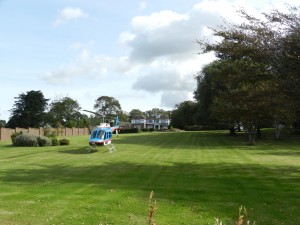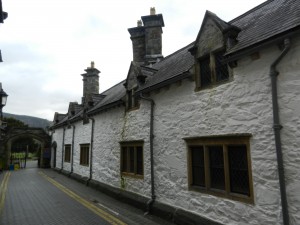Is your town teeming with Precariats or the reserve of the Elite?
The BBC recently featured in their news section a class calculator based on measures of social, cultural and economic capital. Using data gathered from a questionnaire put to the BBC online audience and analysis by professors from the London School of Economics and the University of Manchester, the Beeb has put together a 7 tier class system that, they believe, accurately reflects the current class makeup in Britain.
They looked at factors including employment, income, property ownership, savings and the cultural activities you frequently undertake (eg. going to theatre). If you want to see what class you are in, take the test here.
 A similar survey has just been released from the Office of National Statistics which supports the Beeb’s work and offers a geographical analysis – revealing Britain’s Poshest places. If you live in Richmond upon Thames or St Albans, for example, you are statistically highly likely to be in the ‘Elite’ or ‘Established Middle Class’ Designations – the top two tiers of the system – designated as ‘AB’.
A similar survey has just been released from the Office of National Statistics which supports the Beeb’s work and offers a geographical analysis – revealing Britain’s Poshest places. If you live in Richmond upon Thames or St Albans, for example, you are statistically highly likely to be in the ‘Elite’ or ‘Established Middle Class’ Designations – the top two tiers of the system – designated as ‘AB’.
In Richmond, the data shows that there are 1,355 people who qualify for the AB classification living in every square mile of the London Borough, where the average house price is £485,496. Over 48% of the total population of the Borough fall into this category, topped only by the City of London where over 60% of the population are AB, although this is taken as a special case due to the low proportion of residential property use.
St Albans is close behind, with over 45% of the population in the AB bracket – evidently taking advantage of the fast rail connection into the City.
 At the other end of the spectrum, in brackets D and E, comes Blaenau Gwent, suffering after the loss of its steelworks and collieries back in the 1980s. Over 43% of the population there is in the bottom two brackets. Corby, in Northamptonshire, and Middlesbrough, Cleveland, also figure at the bottom of the table with 41.6% and 40.9% respectively in the ‘DE’ classification.
At the other end of the spectrum, in brackets D and E, comes Blaenau Gwent, suffering after the loss of its steelworks and collieries back in the 1980s. Over 43% of the population there is in the bottom two brackets. Corby, in Northamptonshire, and Middlesbrough, Cleveland, also figure at the bottom of the table with 41.6% and 40.9% respectively in the ‘DE’ classification.
With these studies, sociologists are attempting to create a more accurate picture of British Society and how it has changed over the years. They have found that typical views on the working class and middle class are fast becoming outdated, as the true working class shrinks. In fact, they discovered that just 39% of those surveyed actually fell into the traditional ‘Established Middle Class’ or ‘Traditional Working Class’ categories, which were once, along with the ‘Elite’ classification, the only categories focused upon in twentieth century analysis.
—
If you are looking to move to any of the areas mentioned above, click on the links to contact a verified independent Chartered Surveyor for no obligations advice. If you are buying property elsewhere, click on the link below to find your local surveyor.
05/04/2013Â Â Â Â Â Â Â Â Â Â Â Â Â Â Â Â Â Â Â Â Â Â Â Â Â Â Â Â Â Â Â Â Â Â Â Â Â Â Â Â Â Â Â Â Â Â Â Â Â Â Â Â Â Â Â Â Â Â Â Â Â Â Â Â Â Â Â Â Â Â Â Â Â Â Â Â Â Â Â Â Â Â Â Â Â Â Â Â Â Â Â Â Â Â Â Â Â Â Â Â Â Â Â Â Â Â Â Â Â Â Â Â Â Â Â Â Â Â Â Â SRJ/LCB
[contact-form][contact-field label=’Name’ type=’name’ required=’1’/][contact-field label=’Email’ type=’email’ required=’1’/][contact-field label=’I liked this article’ type=’checkbox’/][contact-field label=’I did not like this article’ type=’checkbox’/][contact-field label=’Comment’ type=’textarea’/][/contact-form]
05/04/2013Â Â Â Â Â Â Â Â Â Â Â Â Â Â Â Â Â Â Â Â Â Â Â Â Â Â Â Â Â Â Â Â Â Â Â Â Â Â Â Â Â Â Â Â Â Â Â Â Â Â Â Â Â Â Â Â Â Â Â Â Â Â Â Â Â Â Â Â Â Â Â Â Â Â Â Â Â Â Â Â Â Â Â Â Â Â Â Â Â Â Â Â Â Â Â Â Â Â Â Â Â Â Â SRJ/LCB

